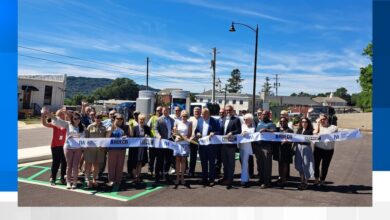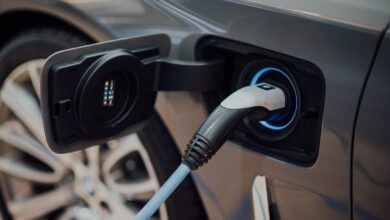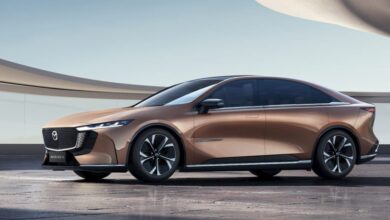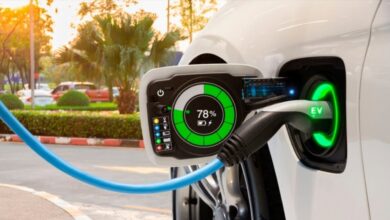EV Charging Experts Are Still Stymied & Frustrated By Public Fast Charging
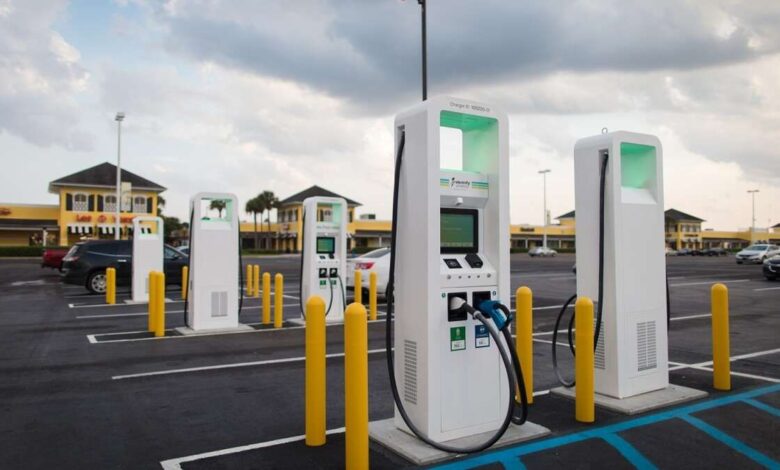
Over the past few weeks, my colleagues and I, who test, evaluate, and report on electric vehicles and electric vehicle charging, have one thing in common: We’ve all had negative experiences when trying to charge modern EVs using the most modern and up-to-date public DC fast chargers.
The problems are not local; they happen all over the United States. The vehicles are all different models. The issues are wide-ranging not limited to one charger company or type of failure. The story will summarize problems that experts on EV charging have experienced over the past weeks when charging at public DC fast chargers. In the story, we will embed links to the experts’ bios or landing pages so you can satisfy your curiosity about what makes us experts, along with the original publications. Every expert mentioned on this page owns a Level 2 home charger (I have four), and every expert mentioned in this story has been testing EVs for respected publications for a decade or longer.
Do we often charge in public seamlessly and predictably? Absolutely. Do we mostly charge our test EVs and those we own at home? Of course. The testers in this compilation story are all fortunate enough to have homes where we can charge. The story is not meant to imply that public charging always fails. Rather, it offers real-world details on just how unpredictable charging can be and how random and unexpected the failures to get the intended result can be.
The story intends to challenge the reader to ask why. Here are some whys related to this story:
1) Why, in the third decade since the start of the modern EVs, and the fifteenth since the U.S. launch of the Nissan Leaf, are there still three different DC fast charging standards in use?
2) For years, we’ve been reporting on companies who help solve public charging problems. Why are the problems still happening?
3) The federal government got involved over a year ago. Why haven’t tax dollars with ten digits fixed this?
4) Why did Tesla fire its Supercharger team?
Left Stranded In Our Electric Car!
Kyle Conner, Out of Spec Reviews – Audi E-Tron Sterling, Colorado
Kyle Connor is the foremost expert on public DC fast charging in America. He heads a solid team of experts at his Out of Spec network of channels. Kyle owns multiple EVs and is a die-hard advocate of EVs. What makes Kyle special is his deep knowledge of public charging. Nobody we know has a better understanding of public fast charging than Kyle.
Kyle has shot a video titled “Left Stranded In Our Electric Car! Here’s How We Survived” this month, using his personally-owned Audi E-Tron battery-electric vehicle. As his range dropped to near zero, he was fortunate enough to make it to a public DC fast charging station. However, when Kyle tried to charge, he could not. The charger would start and then immediately stop. The car worked, we know because he charged successfully later that day. The charger worked, too. So what went wrong? Kyle phoned the manufacturer of the DC fast charger and found out that a software update was causing a glitch that prevented charging with his specific model vehicle. Why should the EV model matter if the charging standard the vehicle uses is the same as that used by the charger (EVSE)? It shouldn’t, but it does. Watch the end of Kyle’s video, which starts at timestamp 28 minutes, if you want to learn just how complex and confusing public DC fast charging truly is.
Supercharger Cyberdud
Tom Moloughney State of Charge Tesla Foundation DM Cybertruck, Tesla Supercharger (V3)
If anyone in America rivals Kyle Conner as the top expert on charging, it is Tom Moloughney. An early adopter, EV pioneer, and staunch advocate of battery-electric vehicles, Tom is now the top EV charger (EVSE) tester and reviewer in America. We often cite his score when we test home EV chargers ourselves.
Tom recently charged Tesla’s newest vehicle using Tesla’s most modern and quickest charging option, the V3 Supercharger. Tom was able to connect and charge, but to fill the Cybertruck, or Cyberdud, as Tom terms it, took him about an hour and a half. Charging from roughly 20% SOC to roughly 80% SOC took about 44 minutes. That is drastically longer than the quick “15 to 20 minutes” many EV owners pretend is all that is needed. Tom is a long-term Tesla owner. His summary on how the newest Tesla vehicle charging on what is widely considered to be the best public charging network in the world? “0-80% in 46 minutes, that’s not great…Cybertruck’s a little disappointing to me at launch. I really thought it was going to charge much better than that. But it is what it is.”
Electrify America Chargers In Cheyenne — A Case Study
Aaron Turpen Mercedes-Benz EQE, a BMW i4, and a Genesis GV60, Electrify America, Cheyenne, Wyoming
Aaron Turpen is an industry veteran and local automotive media group officer. He and I have worked together for over a decade off and on at numerous publications, notably Car Talk and Torque News. Aaron has been testing EVs longer than many EV publications have existed and is my go-to resource when I have a technical question. How technically savvy is Aaron? His hobby is programming computer numerically-controlled (CNC) milling machines.
Aaron brings a unique perspective on EVs to his readers. He doesn’t live in traffic-congested California, but rather, wide-open Wyoming. In an article published in the Cowboy Daily, Aaron recounts his experiences charging three pricey luxury EVs from BMW, Mercedes, and Genesis. During his testing, the state-of-the-art 350kW DC fast charger from Electrify America failed to charge each car on multiple occasions. Aaron concludes that “EV fast charging is definitely not ready for prime time.”
During my own DC fast charging testing this month, I experienced slow charge rates, broken chargers, and a charger that stopped charging after just eight minutes. My testing took place in two states and at three different chargers. I aimed to prove or disprove the myth that one can “fill up an EV while using the bathroom and grabbing lunch.” Readers didn’t love my story premise since I carefully logged all my data and didn’t just hang around waiting for the charger to do its thing. But that was just the slow-charging story.
Related Story: Ford’s Blue Oval Network of Chargers Is Fantastic – Our Real-World Test Results
On one of my charging visits, I found that one of four DC Fast chargers was broken. Big deal? Not really. Others were available. I’ve pulled up to broken gas pumps more than once and had to move over to another available pump.
The really disturbing failure was when I tried to charge a Mercedes-AMG EQE from 25% SOC to 80%. I did some mental math and figured 20 minutes should do it. My plan was to do an update to the original story using optimum charging conditions and a faster-charging ($122,000) EV to see if I could prove myself wrong and make readers happy that they were right, and that I’m a big dummy.
I plugged in, saw charging begin, and set my watch for 20 minutes. I peeked at the app I was using after I was across a busy street and saw that I had charged from 25% SOC to 35% in just a few moments, so I had high hopes I could get to 80% in under 20 minutes with ease. My story update was looking bright.
After 20 minutes had passed, I returned to the vehicle, but only 8 minutes of charging had happened. I was stuck at 40% SOC, and the charger had shut off. I was angry with myself. I figured I had accidentally hit “stop” when I glanced at the phone app to check on the charging progress. However, after speaking to the ChargePoint customer service team, I learned I had done nothing wrong. What they described as a “Network error” had stopped my charging session prematurely. I had done nothing wrong. No notification had popped up.
To summarize, four different EV experts using the most expensive and modern EVs created by man, on the most up-to-date, newly installed DC fast chargers all had multiple problems making the darn things work right! Chargers that would not charge, chargers that charged much more slowly than EV advocates claim they should, chargers that were offline, and chargers that would stop working after a very short session without explanation or notifications.
Since Aaron has a home EV charger, I have four, Kyle owns many, and Tom has literally dozens. Why does it matter if public DC fast charging is a hassle? It simply creates news to report we can publish. However, for new EV owners who live in condos, apartments, or multi-family units where home charging is impossible or impractical, it can matter a lot. For those who drive many hours per day for work, or who take road trips it matters a lot. Level 2 charging in public is worthless. Only DC fast charging in public makes any sense at all for commuters and those on road trips.
Three decades into the modern age of EVs, America still has three different charging standards, DC fast chargers with speeds that are not really fast, and reliability issues that seem almost laughable. What’s most worrying about our testing is that we used the most modern, and most expensive EVs at the most modern of chargers. Yet, all four of us had hassles and problems.
If you’d like to add a comment under this story, please note that our comments section has returned and is in bold red at the bottom of the page.
John Goreham is an experienced New England Motor Press Association member and expert vehicle tester. John completed an engineering program with a focus on electric vehicles, followed by two decades of work in high-tech, biopharma, and the automotive supply chain before becoming a news contributor. In addition to his eleven years of work at Torque News, John has published thousands of articles and reviews at American news outlets. He is known for offering unfiltered opinions on vehicle topics. You can connect with John on Linkedin and follow his work at our X channel. Please note that stories carrying John’s by-line are never AI-generated, but he does employ Grammarly grammar and punctuation software when proofreading.
Representative image used at the top of page courtesy of Electrify America. Mercedes EQE charging screen image by John Goreham.




